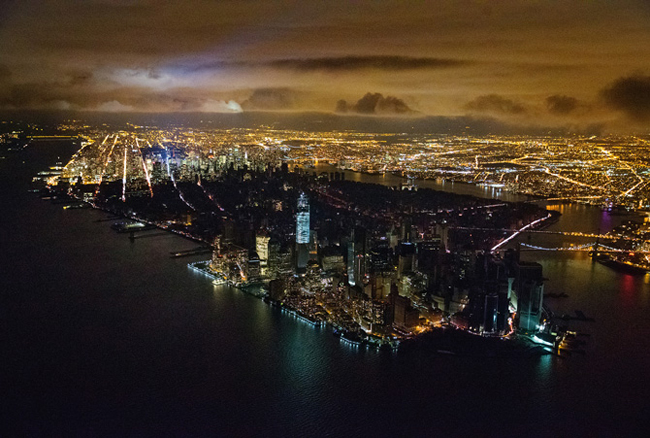New York, NY, April 1, 2014 - For seven days in the Fall 2012, Sandy pounded the Caribbean and U.S. East Coast with punishing rain, wind, and waves, at some points being named a hurricane and at others a superstorm or post-tropical cyclone. Along its entire East Coast path, Sandy’s force caused 140 deaths and accounted for more than $62 billion in economic losses—especially for coastal businesses and infrastructure.
New York Sea Grant provided real-time information on the track, intensity and aftermath of Superstorm Sandy via social media when other outlets, including the Web servers hosting the data of Stony Brook University's Storm Surge Research Group, lost power. And, in the weeks leading up to the one year anniversary of Sandy's late October landfall, Sea Grant programs in a number of coastal states, including New York, joined the National Sea Grant College Program's federal funding agency, the National Oceanic and Atmospheric Administration (NOAA), in a look back.
New York Sea Grant-funded researchers were called upon in the year after the storm to provide information and analysis to The New York Times, The Wall Street Journal, NBC News, ABC News, the Associated Press and Newsday, among others. Most recently, these investigators were featured in September 2013's National Geographic: Rising Seas cover story, October-December's Burn - An Energy Journal's radio and Web series, as well as other interviews, panel discussions and documentaries.
Our program's award-winning year-long look at "science behind the storm" stories and related YouTube clips reached over 14,300 visitors on Facebook alone, with repeat retweeters on Twitter having included, among others, NOAA Research, the National Sea Grant Office, numerous Sea Grant programs, Cornell Cooperative Extension, The Extension Disaster Education Network, Stony Brook University and its School of Marine and Atmospheric Sciences.
All of this content can be found in NYSG's Superstorm Sandy archive, www.nyseagrant.org/superstormsandy. And there's more on the topic of hurricane education and severe storm preparedness at www.nyseagrant.org/hurricane.

In Manhattan, Superstorm Sandy's surging tide in late-October 2012
knocked out a Con Ed substation, darkening the city below Manhattan.
Private generators provided some light, including the blue glow of the
new World Trade Center, whose base is three feet above sea level.
Photograph by Iwan Baan, Reportage by Getty Images, Reprinted as part of
National Geographic's "Rising Seas" coverage.
In Spring 2014, NYSG produced the post-storm impact statement "Sandy’s Harsh Legacy: New York Sea Grant Helps New Yorkers Understand and Mitigate Its Impacts," a summary of the program's efforts since late Fall 2012, when the storm impacted the region. This fact sheet can be downloaded as a three-page document (pdf) or viewed as individual stories with additional information:
- NYSG Responds with Research and Outreach More>
- Infrastructure Failed; Salt Marsh Delivers More>
NYSG Responds Quickly to Sandy Aftermath
- NYSG Provides Timely Efforts to Monitor Fire Island Breach More>
NYSG Brings Coastal Processes Expertise to Meet Shoreline Communities’ Needs